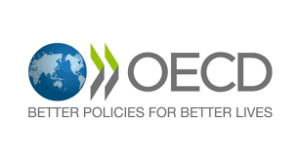WORKING IT OUT: CAREER GUIDANCE AND EMPLOYER ENGAGEMENT
WORKING IT OUT: CAREER GUIDANCE AND EMPLOYER ENGAGEMENT
WORKING IT OUT: CAREER GUIDANCE AND EMPLOYER ENGAGEMENT
A new report published by the OECD (2nd July 2018) looks at the features of good career guidance practice, including the need for schools to begin early and the essential role of exposure to the world of work.
To access the full report: OECD_Guidance and employers
The paper states ‘career and education decisions are amongst the most important young people make. Gender, ethnicity and socio-economic factors all strongly affect these choices. Career guidance is both an individual and a social good: it helps individuals to progress in their learning and work, but it also helps the effective functioning of the labour and learning markets, and contributes to a range of social policy goals, including social mobility and equity. This justifies the public investment in career guidance activities. Empirical evidence point towards career guidance services – in school and outside – having a formative influence on young people’s understanding of themselves and the world of work, and can often improve educational, social and economic outcomes. As young people stay in education and training longer and as the labour market becomes more complex, the case for career guidance grows. But what makes for effective provision? This paper looks at the features of good career guidance practice, including the need for schools to begin early and the essential role of exposure to the world of work.”
It looks at the need for, and delivery of, career guidance in OECD countries. “Young people have more decisions to make than before – many more students stay in education beyond the end of compulsory schooling – and they are making these choices in the context of a rapidly changing labour market. It is timely for countries to think afresh about how career guidance is delivered in schools. Research evidence, while still imperfect overall, has improved considerably over recent years. Evidence on the educational and economic returns related to career guidance is growing, providing valuable insights for policy and practice. Prominent amongst these is that effective career guidance includes extensive engagement from people in work (employers, employees, trade unions, professional bodies). At its best, such exposure to the world of work enriches career guidance by presenting young people with authentic and trusted insights into jobs and how it relates to decisions about education and training.
The paper follows established OECD practice by understanding career guidance as a connected family of activities including:
Career education in which students learn about the world of work and develop career management skills through classroom teaching, and through other activities (OECD, 2010).
Career information on courses and occupations, learning and career opportunities, progression routes and choices, as well as information on where to find help and advice, and how to access it (OECD, 2010).
Individual career counselling on a one-to-one basis, providing specific advice on career decisions; either pro-actively (mandatory interviews for all) or reactively (on demand). Advice can be general or targeted (Watts, 2009).
Direct contact with the world of work to give young people first-hand insights into, and experiences of, the labour market in order to raise, broaden and inform career aspirations (Hughes et al., 2016).
Provide regular opportunity for young people, from primary education onwards, to reflect on and discuss their prospective futures.
Allow students to consider the breadth of the labour market and particularly occupations which are of strategic economic importance, newly emerging and/or likely to be misunderstood (such as the skilled trades).
Undertake school-wide approaches, bringing on board career guidance specialists, but also teachers and school leaders, as well as parents, and people in work.
Provide easy access to trustworthy labour market information and advice/guidance from well-trained, independent and impartial professionals in advance of key decision points.
Recognise that the ways in which young people think about jobs and careers are shaped by parental influence, their social background and sense of identity, addressing information asymmetries about specific professions and challenge gender and ethnic stereotyping.
Target young people from the most disadvantaged backgrounds for the greatest levels of intervention.
Continue to develop evidence in this policy field, using robust methodologies, including longitudinal data, to provide better evidence for the outcomes of policy interventions.
This is a very timely report given the need for greater awareness and investment in career guidance activities that complement the work of teachers, employers, volunteers and mentors.
